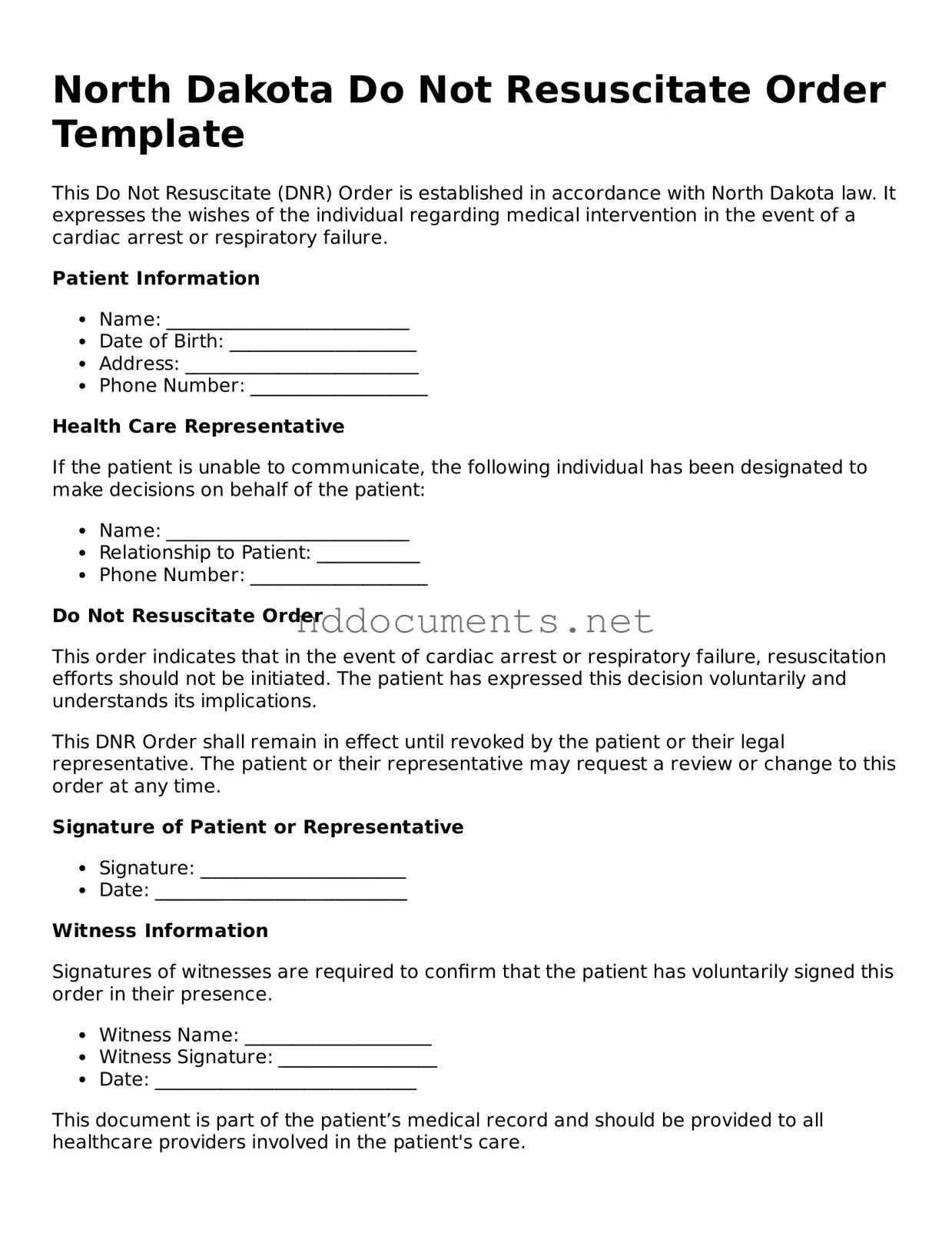Fillable Do Not Resuscitate Order Document for North Dakota
A Do Not Resuscitate (DNR) Order form in North Dakota is a legal document that allows individuals to express their wishes regarding resuscitation efforts in the event of a medical emergency. This form serves as a vital tool for patients who prefer to avoid aggressive life-saving measures, ensuring that their healthcare preferences are respected. Understanding the nuances of this form can empower individuals to make informed decisions about their end-of-life care.
Make Your Document Online
